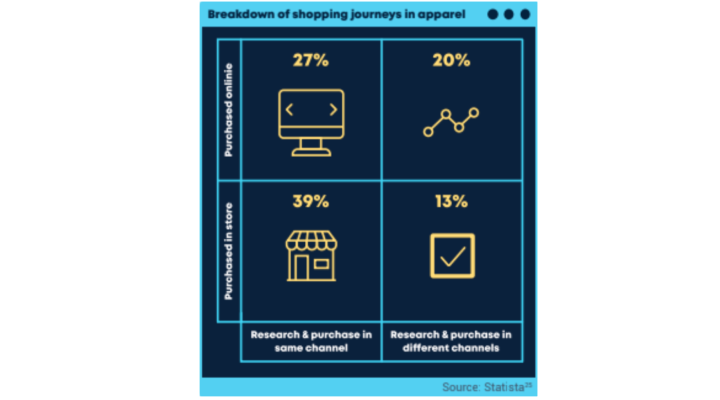Holiday season trading is a big deal for many retail businesses. Customers are looking for the best stocking stuffers, and tourists abound as workplaces and schools close the book on another year. Some businesses even rely on the last few months of the year to turn a profit.
But this year it will be different.
Mention end-to-end disruption, and the retail industry comes to mind. One of the hardest-hit sectors by the pandemic, many establishments are still finding ways to plate up safely. With the silly season fast approaching and COVID-19 restrictions uncertain, many consumers have no clue how they will be celebrating this year. While businesses may not be able to predict what will happen, now is the time to prepare.
Many will need to adapt in order to thrive: sometimes this means shaking up your offering, and at other times it means potentially overhauling your entire business model.
So where does the future of retail lie? The global pandemic accelerated retail trends that had been building for years. Now the real question is, what trends will ebb and what will stay the course, ushering the industry into 2021 and beyond. Here’s how you can adapt to stay on top.
There’s no doubt that 2020 has dramatically upended how companies and consumers transact. Omnichannel shoppers are on the rise, with one in three shoppers using multiple channels to reach their purchasing decisions. E-commerce continues to gain ground as 52% of Americans opt for window browsers over window shopping.
Shifting from what we sell to how we sell
What we present to consumers is no longer enough. To truly differentiate product offerings, retailers must think about how they can deliver unique shopping journeys to consumers. For some, this means adopting e-commerce and embracing new retail technologies. For others, this means focusing on building an amazing in-store experience.
Industry leaders are actively re-envisioning methods for delivering a seamless experience across all consumer touchpoints. Physical stores are still important, but their role as a sales-only channel is over. Omnichannel shopping, where offline and online experiences live in symbiosis, is the future of retail.

Connecting the global supply chain
COVID-19 has seen the push of “essential consumerism” — consumers have tightened their purse strings to prepare for pending recessions, and are more intentional with their non-essential purchases than ever before. Retailers should consider customizing their inventory with essential items, and developing long-lasting “non-essential goods”.
As our world becomes more connected, there is a big push from consumers to understand how things are made and where their goods come from. For retailers, there is an opportunity to understand exactly what customers want: is it ethical manufacturing, the ability to support local economies, or extending the life of your goods with sustainable practices like recycling?
The customer journey compass
Rather than bending to every new technology or trend that pops up in the retail sphere, map out the way your customers purchase. That way, you can pinpoint areas of opportunity to improve customer experience with human interactions, or digital aides. Delivering a customer experience that translates to a customer’s needs is the key to building a competitive advantage.
For example, hypermarkets like Walmart aren’t limiting their scale-ups to just online shopping. They’re also offering personalized pickup options, and delighting customers who prefer to walk down physical aisles with an experiential mobile “Store Assistant” app.
Customer-centric shopping experiences
Despite all the challenges posed this year, we continue to see retail success stories as brands adapt to online shopping and safe in-store experiences. Here’s how to shake up the shopper experience in 2021:
- People first. Delivering a 5-star customer experience starts with giving your people the ideal employee experience. Close the skills gap with impactful training and improve internal communications to build a culture of accountability in your store.
- Cutting to size, not cutting edge. Customer centricity often means choosing the right technology, even if this means that you’re not leading on every trend. Consider investing in a few key areas to improve your customer experience like tightening up your delivery logistics to complement an e-commerce operation, or exploring omnichannel platforms.
- Enable with data. Data has the ability to support your day-to-day operations, but using it to appeal to customers at every touchpoint is also incredibly powerful. With iAuditor, you can build a holistic picture of your business with our analytics dashboard. Use and manage customer data to drive loyalty programs, or to uncover insights for future product development.
- Streamline with checklists. Our free COVID-19 response resource will help you stay on top of evolving regulations and optimize internal processes.
To prepare you for the holiday season, we’ve put together a comprehensive report for retail operations leaders to embrace the silver lining so you can come out on top, too. You can download the full report here






